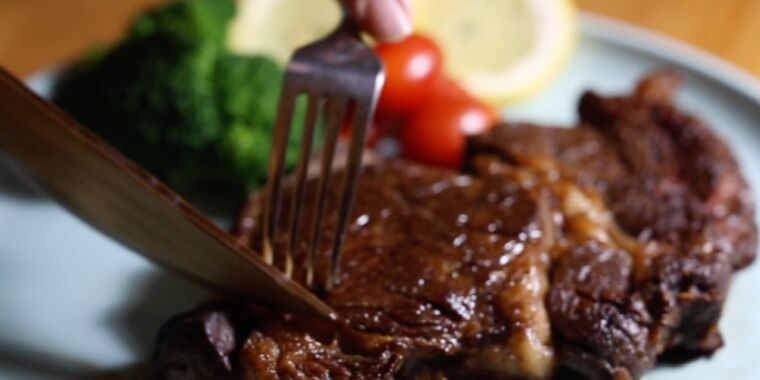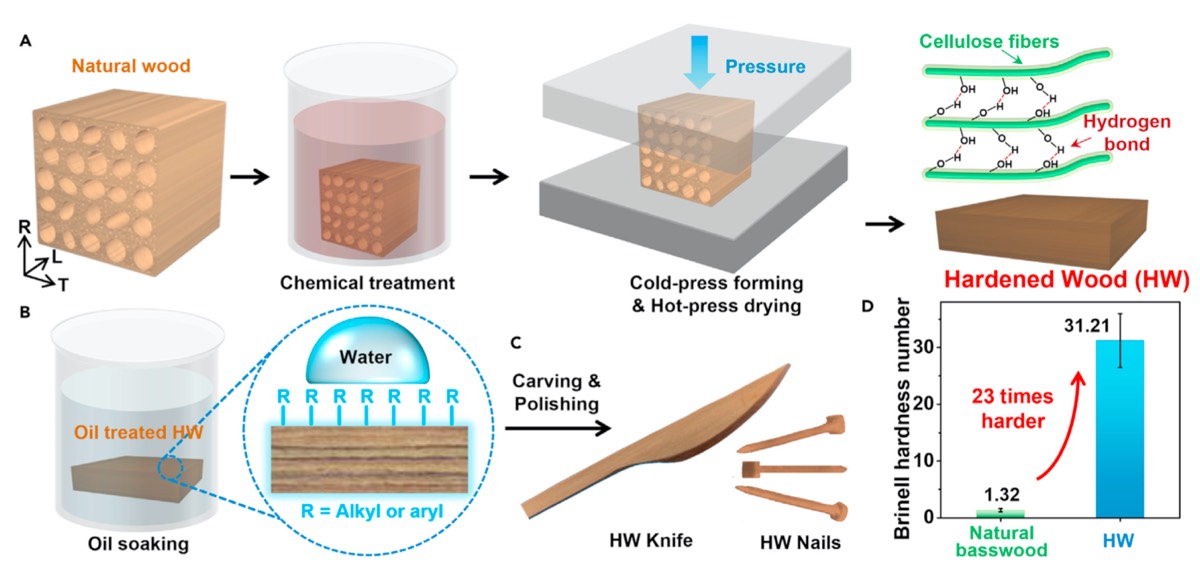I will stick with steel for now but kinda cool.
-
The BladeForums.com 2024 Traditional Knife is ready to order! See this thread for details: https://www.bladeforums.com/threads/bladeforums-2024-traditional-knife.2003187/
Price is$300$250 ea (shipped within CONUS). If you live outside the US, I will contact you after your order for extra shipping charges.
Order here: https://www.bladeforums.com/help/2024-traditional/ - Order as many as you like, we have plenty.
You are using an out of date browser. It may not display this or other websites correctly.
You should upgrade or use an alternative browser.
You should upgrade or use an alternative browser.
Knife from wood.
- Thread starter LG&M
- Start date
- Joined
- Dec 6, 2020
- Messages
- 1,092
I guess Larrin's going to be out of a job soon.
- Joined
- Nov 21, 2013
- Messages
- 3,416
Really, why ?
DavidZ
Gold Member
- Joined
- Oct 30, 2004
- Messages
- 4,264
sgt1372
Platinum Member
- Joined
- Oct 16, 2018
- Messages
- 8,342
Just read the following article about it that illustrates the mfging process which they seem to think is an practical and afforable means of production:

 arstechnica.com
arstechnica.com

They use something called the Brinell Scale to compare hardness w/natural basswood (whatever that is) but not w/steel. Guess it wouldn't make much sense to use the Rockwell (indentation) Scale of steel hardness with it, since that would probably just punch right thru and fracture the wood.
So, my question is: How do they know it's actually 3x's sharper than a stainless steel table knife (which isn't all that sharp to begin with)?
In other words: What measure of edge retention did they use for determining that?

Watch this wooden knife cut effortlessly through juicy, medium-well-done steak
Also: A hardened wood nail performed as well as its stainless steel counterpart.

They use something called the Brinell Scale to compare hardness w/natural basswood (whatever that is) but not w/steel. Guess it wouldn't make much sense to use the Rockwell (indentation) Scale of steel hardness with it, since that would probably just punch right thru and fracture the wood.
So, my question is: How do they know it's actually 3x's sharper than a stainless steel table knife (which isn't all that sharp to begin with)?
In other words: What measure of edge retention did they use for determining that?
- Joined
- Aug 10, 2009
- Messages
- 708
There is a guy (kiwami japan), who makes knives out of all kinds of things. Has dozens of videos on youtube about it. One time he used pasta to make the knife and sharpened it enough to cut a tomato, at least. It is all relative. 

Steak Knife Made From Hardened Wood Is Three Times Sharper Than Steel - Slashdot
Scientists have used a new form of hardened wood to create a steak knife that is nearly three times sharper than a stainless steel dinner table knife. It can even be washed in the dishwasher! New Atlas reports: This hardy new form of wood is the handiwork of scientists at the University of...
science.slashdot.org
can it be? anyone have any additional info?

Glenn Goodlett
Gold Member
- Joined
- Sep 6, 2016
- Messages
- 1,397
Wooden nails would be kind of cool. For what, I don't know.
How did they measure sharpness to come up with the number 3x?
Let's say they used the Bess tester, a butter knife would be 2000, so 3x sharper means 2000/3=666? That's still not that sharp, a cheap kitchen knife if you know how to sharpen can get much sharper.
Let's say they used the Bess tester, a butter knife would be 2000, so 3x sharper means 2000/3=666? That's still not that sharp, a cheap kitchen knife if you know how to sharpen can get much sharper.
DocJD
Basic Member
- Joined
- Jan 29, 2016
- Messages
- 12,096
I may have missed it, but I didn't see anything about edge retention or if the consumer could sharpen . 
Maybe this is more a disposable product , like the plastic crap you get with takeout ?
The "green" aspect is pure BS if this a disposable .

A decent steel knife can last a VERY long time . So the relative environmental impact is actually minuscule .

Maybe this is more a disposable product , like the plastic crap you get with takeout ?
The "green" aspect is pure BS if this a disposable .

A decent steel knife can last a VERY long time . So the relative environmental impact is actually minuscule .

herisson
Apple slicing rocking chair dweller
- Joined
- Mar 11, 2013
- Messages
- 4,754
I agree with you, but.... many basic customers (you know, not us knife nerds...) buy the cheapest steel cutlery available, throw it away when it gets dull (and it does so quickly, it doesn't even come that sharp from the factory) and buy new ones. Steel has a heavy environmental impact so these wooden knives would fit this particular set of customers (it's huge !) very well. There are already a lot of bamboo kitchen tools (even "knives") available. Very sustainable : bamboo grows like weeds, it's not likely we run out of bamboo. Same for these wooden "knives". You harvest wood, plant trees to replace it, some years later, Bam : new crop. Think of paper : whole forests are dedicated to paper production. Not saying it's a good thing to develop the consumable products industry. I'm all on the side of correctly used, and carefully maintained, tools (and these will last decades). It irrates me when my BIL splits wood with the cutting axe. But he doesn't get it (or refuses). And that's the point : people, as a whole, don't want to care. They want to consume and have fun.I may have missed it, but I didn't see anything about edge retention or if the consumer could sharpen .
Maybe this is more a disposable product , like the plastic crap you get with takeout ?
The "green" aspect is pure BS if this a disposable .
A decent steel knife can last a VERY long time . So the relative environmental impact is actually minuscule .
Richard338
Gold Member
- Joined
- May 3, 2005
- Messages
- 7,385
Perhaps it can be done with Ligma (a nut bearing tree), making it a multi purpose harvest.
- Joined
- Feb 27, 2006
- Messages
- 5,191
the first weapons, spears and knives were wood. fire hardening has been around since the cavemen noticed it makes the wood stronger. a spear with a fire hardened tip will actually stick into a live treetrunk when thrown.
herisson
Apple slicing rocking chair dweller
- Joined
- Mar 11, 2013
- Messages
- 4,754
I would really go with the wooden nails : hey, no rust ! But, we already had acacia (black locust ?) pins which last forever. However, you had to drill a hole first... This here ? Could be a thing. The knife ? Not for me. I like steel.
